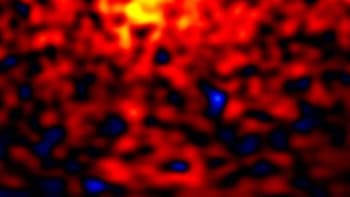
Seven rare, microscopic dust particles, which could be of interstellar origin, have been found among samples collected by NASA’s Stardust mission, according to an international team of researchers. The tiny particles show features that are consistent with dust that would be found in an interstellar dust stream, suggesting that they date back to the beginnings of the solar system. If confirmed to be of interstellar origin, the discovery could improve our understanding of the origin and evolution of the solar system itself.
NASA’s Stardust Interstellar Dust Collector was launched in 1999 and collected thousands of dust particles from the coma (the nebulous envelope around the nucleus) of comet Wild 2, which it flew through in January 2004. Stardust headed back home in 2006, making it the first mission to return solid extraterrestrial material to Earth from beyond the Moon. But on the way, Stardust also sought to collect the first samples of interstellar dust – ancient matter that comes from beyond the solar system. Such interstellar matter had previously been identified only in primitive stony meteorites, such as carbonaceous chondrites, based on them having very different proportions of isotopes compared with typical material found in the solar system.
Cosmic-dust trap
To snare the cosmic dust, the Stardust spacecraft used a collector that was exposed to the interstellar dust stream on two occasions, in 2000 and 2002, for a total of 195 days. The collector, which consisted of a set of silica aerogel tiles held together with aluminium foil, succeeded in capturing a few dozen precious dust particles. Now, Andrew Westphal of the University of California, Berkeley, along with John Bridges of the University of Leicester in the UK and colleagues from a host of institutions worldwide, have studied the microscopic impacts that the particles made on the aerogel tiles and the foil.
Finding and identifying these minute tracks within the aerogel of the returned collector was not easy – individual grains are only microns in size and weigh just picogrammes. Mission scientists therefore set up Stardust@home – a citizen-science project in which members of the public identified possible individual grains by scanning through more than a million images. The volunteers identified all but two of the 71 tracks reported on the surfaces.
Interstellar tracks
The vast majority of these tracks were produced by spacecraft debris, but the researchers concluded that three tracks in the aerogel and four in the foil itself could have originated from interstellar space, because these seven tracks had very different elemental compositions and impact trajectories. “For instance, we were able to distinguish the composition of iron sulphide, nanophase iron and olivine, which are quite distinct from any spacecraft debris, and the direction of the tracks was consistent with this,” says Bridges, whose team at Leicester also measured some of the impact craters on the foil. “Remember that the grains had a closing velocity of up to about 15 km s–1 with the aerogel and foils,” he says. “The residue in the craters was analysed and this gave us a second way of identifying interstellar material.”
The team’s analysis found that the seven particles’ chemical composition and structure varied from that expected. The smaller particles differ greatly from the larger ones, which the researchers describe as having a fluffy structure, similar to a snowflake. The researchers caution that additional tests will need to be carried out before they can say for sure that these are pieces of debris from interstellar space. Three of these four particles retrieved in the foil were found to contain sulphur compounds, which some astronomers have argued do not occur in interstellar dust.
The Stardust team now plans to continue analysing the other 95% of the foils to see if enough additional particles can be found to gain a better understanding of their inherent properties. Two particles, dubbed Orion and Hylabrook, will undergo further tests to determine their oxygen-isotope quantities, which could provide even stronger evidence for their extrasolar origins. Bridges explains that the early identifications of interstellar grains from chemical separates of carbonaceous-chondrite meteorites showed extreme isotopic anomalies. “That’s how we identified them in the first place,” he says. “But now we know that is a much broader range of compositions. We are getting a better view into the Stardust grains that were the seeds of our solar system.”
The research is published in the journal Science.




